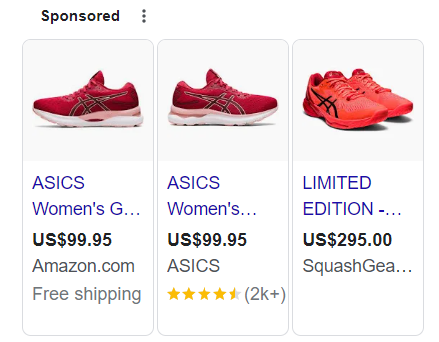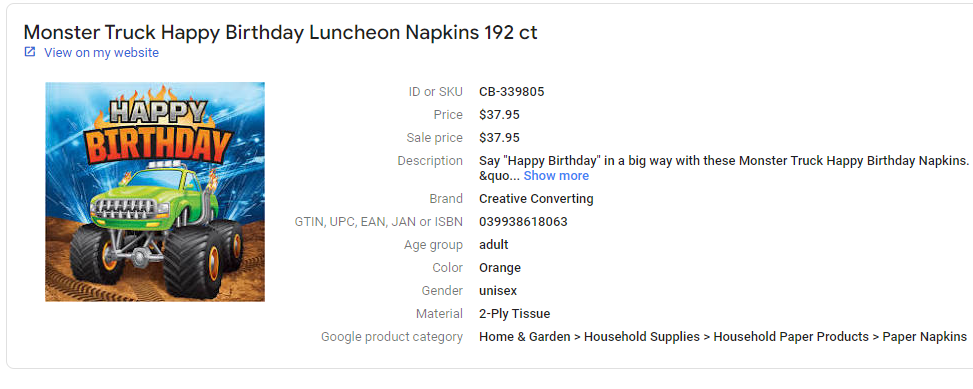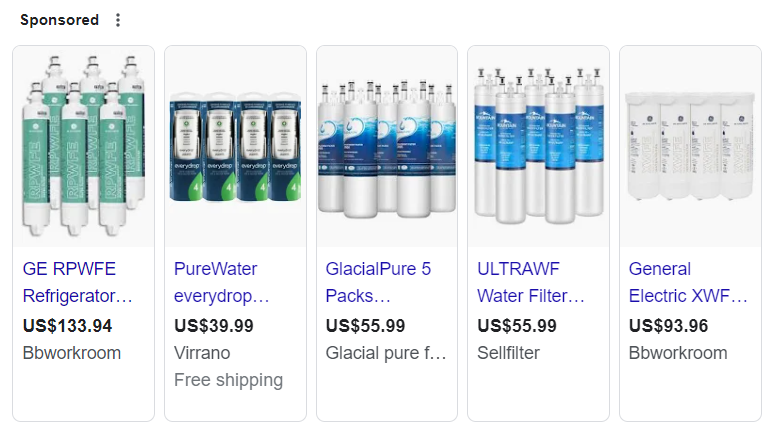What is Product Feed Optimization? [2023]
How Many eCommerce Sites Are There in 2023?
- According to 2023 research, there are currently over 26.5 million eCommerce sites operating worldwide and this number is increasing daily.
- The number of eCommerce sites across the entire globe increased from 9.2 million in 2019 to 26.5 million in 2023.
- With 14 million sites, the United States dominates the eCommerce market, significantly outpacing other nations. With an estimated 1.24 million sites, the United Kingdom comes in second.
Table of Contents
Intro
As ecommerce business owners, one of our main efforts is to reach people searching for the products we sell, to buy online. The products won’t show up in search results or basically anywhere unless we provide Google (or Facebook, or any price comparison engine) with detailed product data through product feeds.
Product feeds are XML or CSV files that contain detailed product data used for shopping comparison sites, marketplaces, search engines, etc.
By utilizing product feeds, our products can show on organic unpaid results, or as paid ads if we run Shopping campaign ads.
Shopping campaigns on Google allow ecommerce merchants to showcase their products through targeted ads on Google. Google Shopping ads pull product data directly from our Google Merchant account’s product feeds. So these feeds serve as the bridge between merchants’ ecommerce stores and their shopping campaigns.
Since Google shopping campaigns rely entirely on product feeds for information, optimizing these feeds is critical for strong campaign performance.
What Is Product Feed Optimization?
Product data feed optimization involves structuring, formatting, and enhancing a feed to meet advertising platform requirements. Key optimizations include standardizing attributes, improving data quality, optimizing titles and descriptions, adding compelling images, categorizing products, and confirming feed specifications are met. Ultimately, the feed should optimize product exposure, ad relevance, and campaign performance to increase sales and reduce costs. Bottom line, optimizing your product feeds is crucial for better product discoverability and sales.
The Importance of Product Feed Optimization
For e-commerce business owners and basically whoever relies on e-commerce platforms to sell their products, understanding and implementing product feed optimization strategies is essential. By optimizing your product feeds, you can effectively compete better with similar and even larger retailers, and this ultimately leads to higher sales and revenue. As e-commerce evolves, it’s a “grow or become obsolete” strategy.
The Role of Product Feed Optimization in E-commerce
By presenting the most accurate data to potential customers, and high-quality data to the Google Merchant store, you create a seamless shopping experience that helps Google to better serve your products and encourages the right users to make a purchase.
"Ultimately, the goal of product feed optimization is to increase sales and revenue."
Furthermore, product feed optimization allows you to target specific customer segments more effectively. By optimizing your product feed for different platforms and marketplaces, you can tailor your product listings to meet the preferences and needs of different audiences. This targeted approach increases the chances of attracting the right customers and generating higher conversion rates.
An optimized product feed will also enable you to track and analyze the performance of your products. By monitoring key metrics, such as CTR (click-through rates), conversion rates, and revenue generated, and using them to optimize your feed, you can identify areas for improvement and make data-driven decisions.
Benefits of Product Feed Optimization
Improved Search Engine Visibility
Optimizing your product feed can significantly improve your search engine visibility. By incorporating relevant keywords, optimizing product titles and descriptions, and providing accurate attributes, you increase the chances of your products ranking higher in search results. Improved visibility leads to more organic traffic, increasing the opportunities for conversions and sales.
Enhanced Shopping Experience for Customers
Product feed optimization goes beyond improving search rankings. By providing accurate and detailed information, organizing products effectively, and using high-quality images, you create a seamless shopping experience for customers. Easy navigation, comprehensive product details, and visually appealing images help customers make confident purchasing decisions, resulting in higher customer satisfaction and loyalty.
Increased Sales and Revenue
Ultimately, the goal of product feed optimization is to increase sales and revenue. By optimizing your product feed and improving its visibility, you attract a larger audience and increase the chances of conversions. With more potential customers finding your products and enjoying a seamless shopping experience, your sales and revenue are bound to grow.
6 Key Elements of Product Feed Optimization
1. Google Shopping Product Titles and Descriptions
A product’s title is the first piece of information that appears in Google Shopping search results. In fact, it is the first point of contact between your products and potential customers.
However, this isn’t the main reason why product titles and descriptions should be optimized. Behind the scenes, Google analyzes the product title and description to tailor the search results to the user’s search term.
For example, if someone is searching for Red Asics 24 Shoes, Google prefers products that have this color attribute at their title over those that do not.

By crafting engaging titles and descriptions that accurately represent your products’ features and benefits, you can capture the attention of shoppers and entice them to click on your listings.
Furthermore, incorporating relevant search terms and adding attributes into your titles and descriptions can significantly improve your search engine rankings. Conducting keyword research to identify the most relevant and high-volume keywords will ensure that your product listings appear prominently in search results, leading to increased visibility and attracting more potential customers.
2. Google Shopping Product Categories and Attributes
Organizing your products into appropriate categories and optimizing their attributes is another essential aspect of product feed optimization. Categorizing your products correctly allows customers to find them easily and efficiently, enhancing their overall shopping experience. Moreover, providing accurate and specific attributes for each product ensures that customers have all the necessary information to make informed purchasing decisions.
Our best practice is to include at least 3 levels of attribution for the product category (main category, sub-category 1,sub-category 2).
It is important to take advantage of all available attributes to provide detailed and comprehensive information about your products. This might include dimensions, materials, colors, sizes, and any other relevant details that help customers understand what they are buying. The more detailed and accurate your product attributes, the more trust you will build with your customers.

3. Google Shopping Product Images
Visually appealing and high-quality product images are crucial in capturing the attention of potential customers. When optimizing your product feed, ensure that you include clear, well-lit, and descriptive images that accurately represent your products. High-resolution images that showcase various angles and details can help customers visualize the product and make informed purchasing decisions.
However, make sure you do not use banners, text, or other tricks that would be in violation of Google Shopping Policy.

4. Google Shopping Pricing
A significant role goes for pricing in product feed optimization. Displaying accurate and competitive prices helps customers compare your products with others and make purchasing decisions. It is important to regularly monitor and update your pricing to stay competitive in the market and attract customers looking for the best deals.
You should include a sale price for products that are on sale, and avoid displaying a price for bulk purchases unless a price per unit is also available.

5. Google Shopping Data Quality and Consistency
One of the essential aspects of product feed optimization is ensuring the quality and consistency of your data. Inaccurate or inconsistent product information can lead to confusion, frustration, and missed opportunities.
Among the possible errors are: html code within the text, too many spaces, special characters that are not allowed, and redundant product identifiers, brand names, and titles.
Additionally, misspellings or multiple versions of the same brand (e.g. Ray-Ban and Rayban) may affect your ability to track and analyze sales performance.
Therefore, it is crucial to regularly review and update your product data, ensuring that all information is correct, up-to-date, and consistent across all platforms and channels.
6. Regular Updates and Maintenance
There are many times when feeds fail to update because of a technical error, resulting in products being disapproved or showing out-of-date prices – resulting in lost sales.
Optimizing your product feed is not a one-time task; it requires ongoing updates and maintenance. Regularly reviewing and refreshing your product listings and analyzing sales and cost performance per each product/product category or price levels can help you stay ahead of the ever-changing market trends, ensuring that your products remain relevant and competitive and your profit margin is as high as possible. Additionally, regularly monitoring your product feed’s availability can help you avoid issues or errors and address them on time.
Product Feed Optimization Platforms
Monitoring, analyzing, and resolving product feed issues might sound too technical or time consuming, but there are many affordable tools available to help you do all of it.
Basically, these tools take your source feed and create a layer over it, creating a whole new feed or few of them, allowing you to edit, adjust, and export it to various marketing channels.
In addition, it can help you create a version of your product feed that meets the specific requirements of each channel, making sure it is fully compatible.
Further, product feed optimization tools like Feeditor allow you to add additional data to your feed, including Google Merchant product status, cost, clicks, sales, and ROI, helping you increase sales of your best selling products and decrease your spend on products that do not sell.
If you run Google Shopping campaigns, it can help you structure your campaigns better by adding custom label columns that can help you filter products and organize multiple campaigns.
To summarize, optimizing product feeds involves fixing technical issues, enriching content, expanding product attributes, following platform guidelines, updating feeds regularly, and analyzing performance.
It’s easy to make and monitor all of the above using 3rd party tools such as Feeditor. It can also help us adjust our product feed for each distribution channel, making sure it’s optimized to their requirements.
Trending Articles
Get exclusive CMO tips that I only share with email subscribers.
Related Articles


